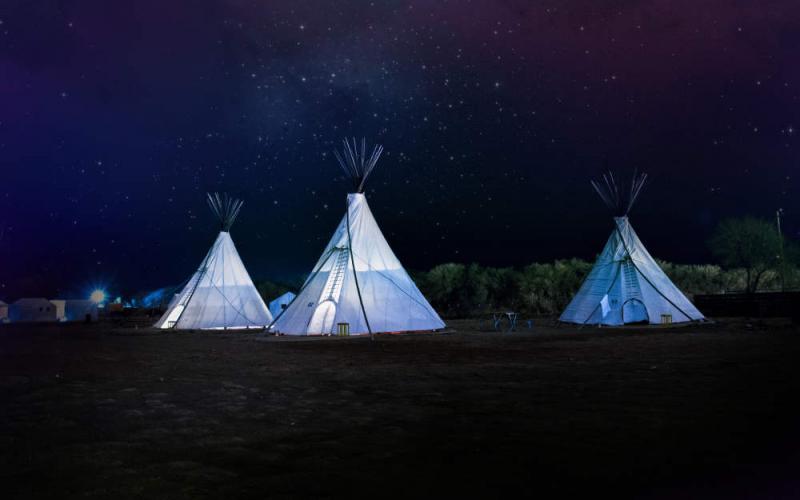
Beautiful photos from around the world
When you go camping, you’re usually looking for much more than aesthetics from your tent. You want it to be easy to set up and sturdily weatherproof. Mostly, you want it to be super portable. But some tents are truly beautiful. A recently published book called Mobitecture: Architecture on the Move by Rebecca Roke (Phaidon, $25) highlights the best designs in portable architecture, tents included. Here are seven super-cool (if not entirely pragmatic) tents featured in the book.
1. BOLT HALF
Created as part of a 2015 thesis project by industrial designer Kama Jania, the Bolt Half tent (above) gives you peace of mind in a thunderstorm. It has a custom-designed locking frame with copper wiring that discharges electrical currents to the ground if the tent is struck by lightning. It’s waterproof, fits one to two people, and weighs just 2 pounds.
2. UMBRELLA HOUSE
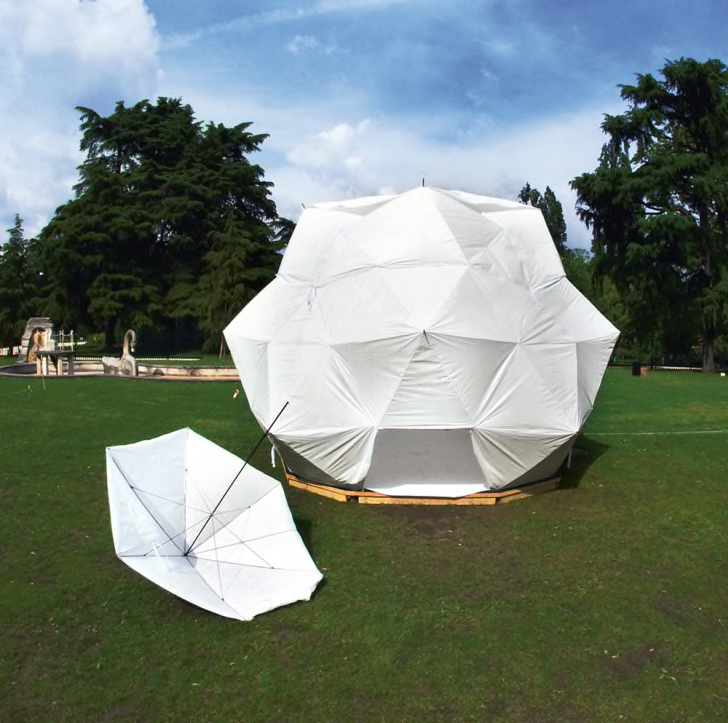
Umbrella House, Kengo Kuma, Italy, 2008. Umbrellas, waterproof zippers, timber base.
YOSHIE NISHIKAWA
In 2008, Japanese architect Kengo Kuma turned white umbrellas into a temporary sun or rain shelter. Kuma added zippers to connect the umbrellas, but used the trusses already built into the umbrella to support the structure. It’s a moveable pavilion meant to turn the individual protection provided by an umbrella into a group shelter.
3. HABITENT
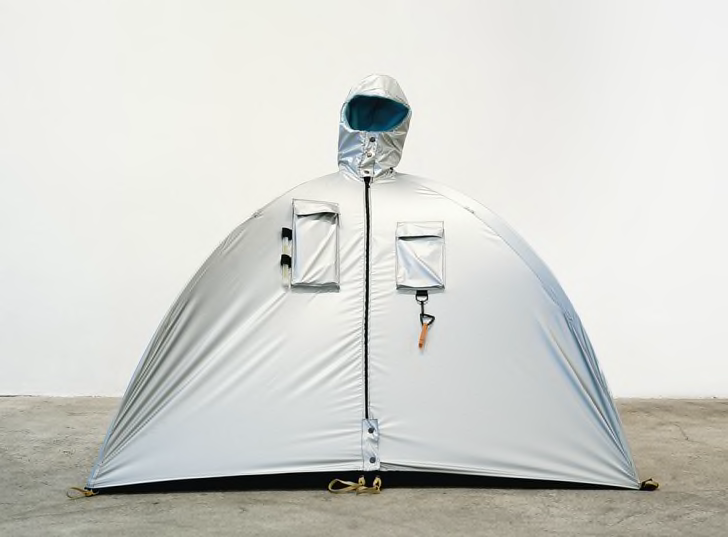
Habitent, Lucy Orta, UK, 1992. Aluminum-coated polyamide, polar fleece, telescopic aluminum poles, whistle, lantern, compass.
PIERRE LEGUILLON
Mobitecture calls this one-person tent from British artist Lucy Orta a piece “somewhere between art, architecture, and social protest.” The Habitent takes a waterproof poncho, created from aluminum material similar to what’s used in emergency space blankets, and turns it into a home for the wearer.
4. THE WEDGE
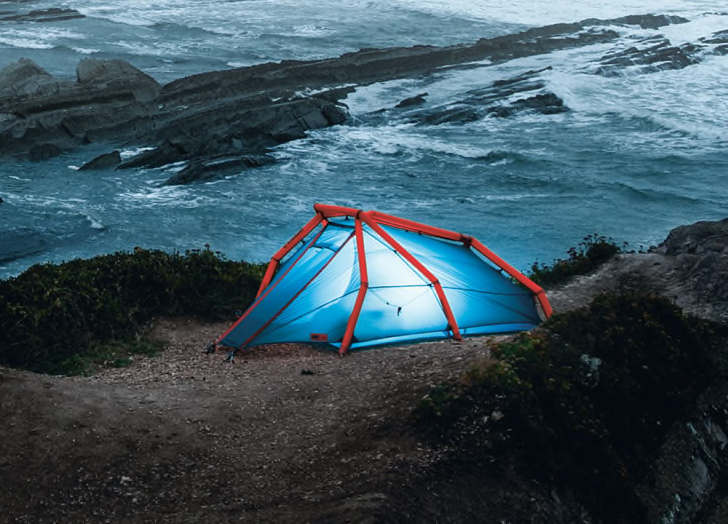
The Wedge, Heimplanet, Germany, 2013. Inflatable thermoplastic urethane, high tensile polyester fabric.
STEFAN LEITNER
This two-man tent from the German outfitter Heimplanet is designed to minimize the time you have to spend setting up your tent. Its interconnected inflatable poles fill up with the same pump. It goes up fast, and when you’re done, you can deflate the tent and fold it back up into your pack. It is not, however, cheap: You can buy it for $600.
5. GLASTONBURY SOLAR CONCEPT TENT
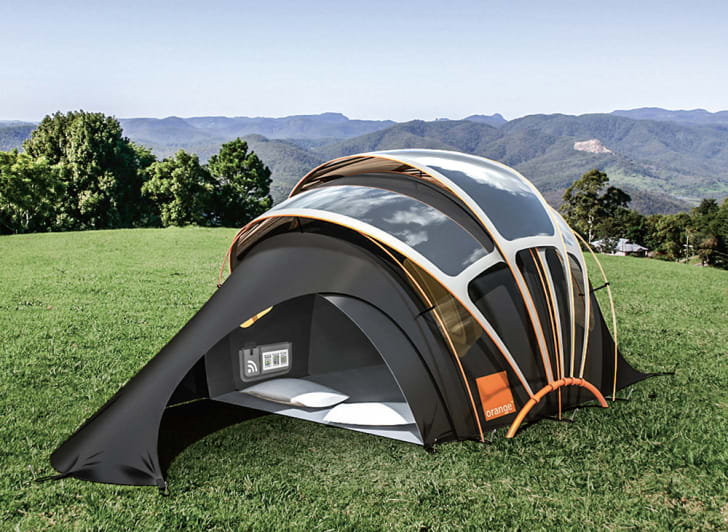
Glastonbury Solar Concept Tent, Kaleidoscope and Orange, UK, 2009. Photovoltaic fabric, solar threads, Plexiglas, plastic.
KALEIDOSCOPE DESIGN
Designed for the Glastonbury music festival in the UK, this tent is woven with photovoltaic threads and covered with adjustable solar panels so that it can store up power to charge festival-goers’s devices overnight. (It was designed for the cell phone provider Orange.) At night, the panels emit light to make the tent glow. It’s just a concept design, but we very much wish it was real.
6. THE CATERPILLAR

Caterpillar, Lambert Kamps, The Netherlands, 2007. PVC, steel cables.LAMBERT KAMPS
This tent designed by Dutch artist Lambert Kamps isn’t for camping—it’s for movies. The inflatable theater can be set up in parks to house up to 30 moviegoers, with a large film screen at the end of the tube. It’s made of PVC foil and designed to remain cool and dry even in wet summer weather.
7. KAMPER KART
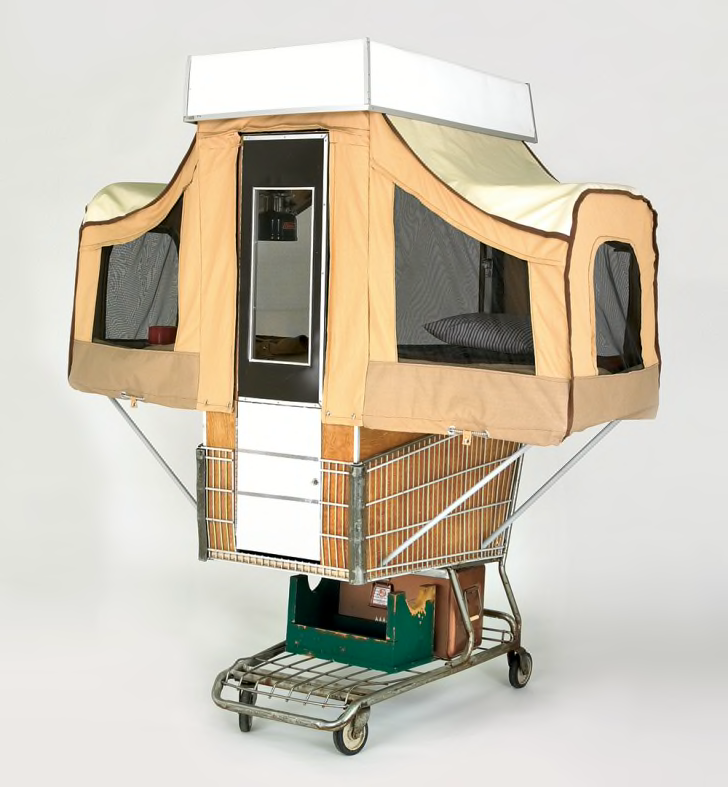
Camper Kart, Kevin Cyr, USA, 2009. Steel shopping cart, chipboard, nylon, canvas.






